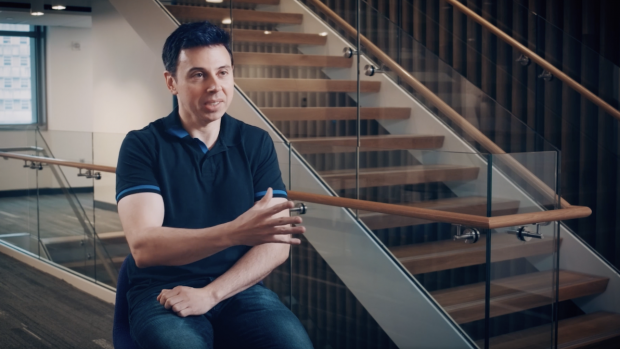Helping get out the (well-informed) vote

Professor Damon McCoy speaks about his research analyzing political advertising data to improve transparency and accountability in a newly released video (see below)
Professor of Computer Science and Engineering Damon McCoy aims to improve the transparency of online political advertising to help ensure accountability and veracity. It was social media’s growing role in shaping elections that prompted him to turn his attention to the problem on a worldwide scale, and already, his Online Transparency Project has revealed insight into the opaque (and sometimes nefarious) world of political advertising in both the United States and Canada, with more countries to come.
He and Ph.D. candidate Laura Edelson have worked to create easy-to-use and open-source tools to collect, archive, and analyze political advertising data, and this past summer, they published the first in-depth analysis of Facebook political advertising, giving all interested an understanding of who is advertising, what they are advertising, and how much is being spent to influence votes and the targets of the ads.
The team — which applied versions of the data scraping and analysis techniques McCoy had previously used against criminals, including human traffickers – analyzed hundreds of thousands of political ads and reported, among other findings, that Facebook and Instagram users viewed political ads at least 1.4 billion times and that the biggest spender within the two-month study period was the Trump Make America Great Again Committee, which posted 4,127 ads that attracted 26.4 million impressions at a cost of $190,400.
The researchers later expanded their work to include Google and Twitter ads, and they are releasing regular updates of all political advertisements collected through the November 2020 election; those updates have become a staple for both investigative reporters and the public, offering insights that are otherwise unavailable from the new-media giants. A second study will examine how the Russian tactics used in the 2016 election have been adopted by other political advertisers and how few political advertisers reveal the funders behind them.
“Our algorithms are neutral and nonpartisan,” McCoy stresses. Whatever political party or organization is involved, voters should be well-informed.”
Funding from Democracy Fund, Luminate, and National Science Foundation helps support the work. The Online Transparency Project also receives funding for its research on Canadian election advertising from the Digital Ecosystem Research Challenge.
McCoy — who also researches wireless privacy, anonymous communication systems, cyber-physical security (which relates to systems like power grids and smart automobiles), and the economics of e-crime — also recently co-authored “Reading the Tea Leaves: A Comparative Analysis of Threat Intelligence,” “Clinical Computer Security for Victims of Intimate Partner Violence,” and “Platforms in Everything: Analyzing Ground-Truth Data on the Anatomy and Economics of Bullet-Proof Hosting,” presented during the 2019 USENIX Security Symposium.




